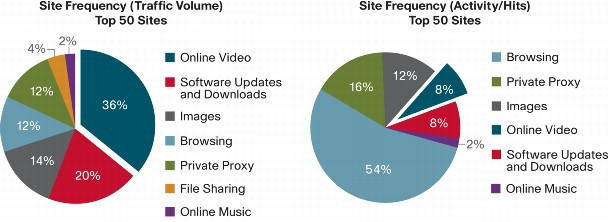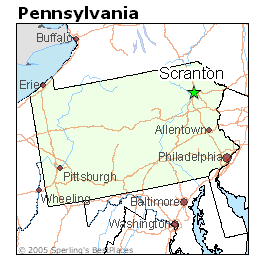 A massive fire raced through 62 apartments at the Galleria apartment home complex in Fargo, N.D., in mid-October leaving two firefighters temporarily trapped and 150 residents with nowhere to stay.
A massive fire raced through 62 apartments at the Galleria apartment home complex in Fargo, N.D., in mid-October leaving two firefighters temporarily trapped and 150 residents with nowhere to stay.
As displaced residents contemplated the loss of their personal possessions, dealt with insurance company red tape in trying to get temporary housing allowances, and coped emotionally through the devastation, Cable One, the complex’s cable operator (owned by the Washington Post), wanted to let fire victims know they were thinking of them… and the hundreds of dollars in cable equipment lost in the fire.
“We’ve been hurt too,” Cable One’s General Manager Scott Geston actually told NBC’s Today show.
Two days after the fire, Cable One started reaching out to some fire victims demanding payment for their lost cable equipment, payable with cash, check (with proper ID of course), or money order… or else.
“When may we expect payment?” was the most important question on the cable company’s mind according to several residents infuriated by Cable One’s completely unsympathetic attitude.
In Fargo, local stores, churches, community groups and individuals are donating time, money, and even places to stay for displaced Galleria residents or their pets. Cable One’s disaster recovery plan is to hurry out bills for $1,000 or more for their lost equipment.
“They can… exhale rapidly on me,” writes former Galleria resident Jim who found Stop the Cap! thanks to the Washington Post‘s opposition to Net Neutrality. “I ‘re-phrased’ that because I am sure your group has readers of all ages, but I think most can put it together.”
Jim said Cable One is trolling around looking for at least $1,000 from him for equipment incinerated in the fire.
“We are staying at a extended-stay motel on an emergency stipend and these bloodsuckers have started demanding money,” he writes. “If only my renter’s insurance agent was as aggressive in handling my claim.”
Other fire victims are reporting similar experiences of unparalleled aggressiveness by the cable operator, literally hours after the fire.
It’s also the talk of Fargo:
You have to wonder if anyone at Cable One stopped to think, “This might be a bad idea”, or if the company itself is made up entirely of morons.
As mostly everyone has stated, the company has to have insurance. It’s not like this is the first time this has happened to a cable company in the history of the world, so they have to cover their bases as a company.
But to ask those who lost everything and could only take a box (if that) of items out of their charred apartments to go back and check to see if there are any remnants of their precious DVR boxes left? Nice work, Cable One. You’ve somehow reached a new low.
I feel dirty knowing that I purchase services from this company. I guess they can act as cold as they want and not worry about public perception since they’re the only cable provider available in Fargo.
Some fire victims say the pain and suffering they endured from the cable company didn’t start with the fire, because Cable One provided bad service all along. But now that the fire is over, the company’s attitude towards the fire victims shows the true extent of how low this cable company can go.
“It’s all about the money with them — they want their money, and some fellow victims tell me the company has been increasing the dollar amounts demanded,” Jim writes.
When will Jim be paying Cable One? “When hell freezes over.”
That’s an attitude shared by several Galleria residents.
It’s also an attitude expressed by many other cable and satellite companies who would not think of charging fire victims for equipment lost in tragic circumstances like this. The damage to the company’s reputation would be worth more than the value of the lost equipment.
“If you have a crappy reputation to start with, there is little to lose acting like insensitive thugs in cases like this,” according to Jim.
Many residents have other issues more important than repaying the cable company for cable boxes. Many Galleria renters with pets are discovering finding a new permanent home may mean giving up their dogs and cats — they are not allowed at most Fargo apartment complexes.
After the local and national media pounced on the story, Cable One retracted their earlier insistence on being paid… slightly.
The Associated Press reported Cable One has now agreed to “eat the cost of damaged equipment for customers with modems, telephones or digital receivers.”
But the company still demands payment for lost DVR boxes, which Geston says are worth $500 new. The company wants residents with renter’s insurance to submit claims. For those without insurance, Geston says Cable One is open to resolving the issue by determining a fair payment plan.
Customer Rick told a Fargo TV station they shouldn’t hold their breath waiting for his check. He won’t be paying them. “No. On principle, I’m not.”
[flv]http://www.phillipdampier.com/video/KVLY Fargo Cable One Wants Their Money 10-17-10.flv[/flv]
KVLY-TV in Fargo shares the story of upset fire victims horrified Cable One is demanding hundreds of dollars to replace lost cable equipment, in some cases just 48 hours after the fire. (3 minutes)


 Subscribe
Subscribe











